Culture
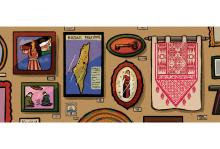
WHEN BSHARA NASSAR moved to the United States in 2011, he quickly noticed that something was missing. “There was no place for our story to be told,” said Nassar, a Palestinian Christian born in Jerusalem and raised in Bethlehem. (“My family has been Christian for 2,000 years,” Nassar told Sojourners. “We didn’t convert — the faith was born here!”) But he felt the story of the Palestinian people “was always being distorted or minimized — it was always about either ‘victims’ or ‘violence.’” So, in 2015, Nassar started visiting universities, churches, and community centers with a “traveling exhibit” of only two pieces, focused on refugees from Palestine. “It took a while to build momentum,” Nassar said.
Nassar is now director of the Museum of the Palestinian People, situated in a rowhouse near Dupont Circle in Washington, D.C. Through the museum, Nassar said, “We want to share our story from our perspective — who we are, where we come from. For too long our stories have been told by others, who portray us in often negative stereotypes. We want to share with the world who Palestinians truly are.”
The museum’s latest exhibition focuses on tatreez, the art of Palestinian embroidery, and looks at the role of “material culture and art history in preserving a nation’s identity,” according to exhibit curator Wafa Ghnaim. For Ghnaim, the first Palestinian embroidery instructor at the Smithsonian Museum and now a senior research fellow for the Metropolitan Museum of Art, the exhibit is about addressing the question, “How do we reclaim our heritage?” The exhibit includes embroidered dresses from before and after 1948—the year of what Palestinians call the Nakba, or catastrophe, when according to the Institute for Palestine Studies, two-thirds of the Palestinian population was uprooted as the State of Israel was created. “The dresses created before 1948 reflect a village identity,” Ghnaim, an expert in Palestinian traditional dress, told Sojourners, “while dresses created after 1948 reflect a national identity.”
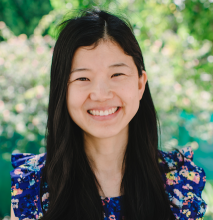
When we started questing the bible, everything falls apart. What can we even trust or believe in? But I think the second fear is that it will drive a wedge between us and this community that is really important to us especially as Asian Americans because we’re a super community oriented culture. So I think that a lot of Asian American Christians are afraid to do that and I think for legitimate reasons. Those fears are not unwarranted.

The prevailing stereotype of unpredictable and hypersexualized brown women’s bodies.
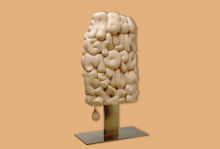
“ARTISTS EXPRESS things that people don’t have words for; that’s why it’s so important to have them in justice spaces.”
With that neat answer, the panelist sits back in her chair, satisfied, bedazzled nails glimmering in the stage lights. I roll my eyes, then immediately feel guilty. You know you’re in for a rough night when you find yourself side-eyeing a Tony Award-winning actress—at a Martin Luther King Jr. Day event, no less—but I can’t help myself. Her answer smacks of the vague, self-congratulatory art-speak I hear on a regular basis, in which people tell me their work is a “metaphor for capitalism,” without any kind of explanation.
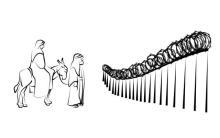
Every year from Dec. 16 to 24, Las Posadas begin in many Latin American countries and immigrant communities in the U.S. Roughly translated, posadas means “inn” or “shelter.” Las Posadas recalls the events in Luke’s Gospel leading up to Jesus’ birth. It’s a Catholic Christian observance with a sung liturgy that’s performed on the streets rather than in church.
A posada begins with a street procession that reenacts Mary and Joseph’s search for shelter at an inn. Those playing the protagonists of the story, Mary and Joseph, are dressed in costume and carry candles as they follow along a prescribed route, knocking on doors. At each door they ask, through special posada songs, for room at the inn. In rural areas, Mary may even ride on a donkey.

As a poet, I used to compartmentalize my poetry. Christian poetry, poetry of the body, and Spanglish poetry all had their unique boxes until I came across the term theopoetics in academic scholarship. We all know how language and scholarship work. While white men are busy naming theopoetics to utilize in scholarship, women, women of color, black women, and indigenous peoples have been theopoeticizing since before Sor Juana Inés de la Cruz to the time of Macuilxochitzin.

For too many Christians, the argument that we should love others because Jesus told us to becomes a begrudging obligation rather than a willful choice. If the only thing that drives Christians to accept disenfranchised people is Jesus, there is a lack of authenticity in that connection. The implication is that without Jesus, there would be no intrinsic value to diversity.
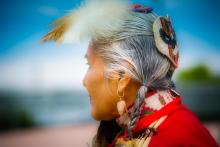
Alaska has a “linguistic emergency,” according to the Alaskan Gov. Bill Walker. A report warned earlier this year that all of the state’s 20 Native American languages might cease to exist by the end of this century, if the state did not act. American policies, particularly in the six decades between the 1870s and 1930s, suppressed Native American languages and culture. It was only after years of activism by indigenous leaders that the Native American Languages Act was passed in 1990, which allowed for the preservation and protection of indigenous languages. Nonetheless, many Native American languages have been on the verge of extinction for the past many years.

And nearly every Sunday, as broken bread stands for broken bodies, I am struck with the words of James Baldwin, when he wrote that to be born black or a person of color in America means that you must “give up all hope of communion.”
When Baldwin wrote those words he believed that the nation was both a Christian nation and a white nation. White supremacy was the foundation of American rites and rights. Whiteness was a prerequisite to be encircled by compassion and included in citizenship. The denial of communion — the denial of the body of Christ and the rejection from the body politic — was connected to the nation’s original sin.

To better comprehend the rhythm of my faith, I need to dig in and do the work. Therefore, I took to Twitter to inquire about the best books on Latinx theology. What follows is a curated list of suggestions I received. These are books by diverse authors from various traditions. It is a beautiful mix. An assortment of theology that tastes like tacos, sancocho, and sugarcane.
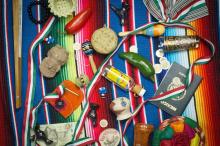
As I look back, I can now see how these transitions had been significant in my caminata espiritual as well as in discerning my call to serve God and God’s people. These different encounters with places, peoples, and cultures, have been crucial in my attempt to foster the conditions for visible signs of Jesus’ kingdom to be a present reality and not only an eschatological affair.

The rift between rich and poor runs deeply through the Asian American and Pacific Islander community. A recent Pew study reveals that Asians, as a whole, “rank as the highest earning racial and ethnic group in the U.S.” But the top 10 percent of AAPI persons earn 10.7 times the amount of those in the bottom 10 percent.
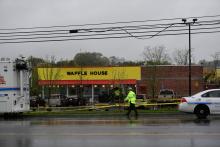
I mentioned these incidents not solely because I’m a black man in America, but because our attention is easily swayed away from these incidents. They are uncomfortable and authentic truths and possible realities for all minorities in America. They are most certainly the fear of most black youth, young adults, persons, and parents in this country. The possibility that you can/could be killed for being ‘Black in America’ is daunting.

The Netflix documentary Wild Wild Country has revived interest in the “free-love cult” founded by Indian guru Rajneesh, or “Osho,” that in 1984 launched a “bioterror attack,” spreading salmonella in restaurants near the group’s Oregon headquarters.

Because for her, designing clothes for Muslim women is less about a modest fit and more about carrying out an Islamic ethic. Of course, it’s also about style. “The modest fashion industry didn’t have anything that was speaking to the fashion-forward and edgy Muslim girl,” Ijaz says. “They’re all speaking to a person that I would see as my mom or my aunt.”
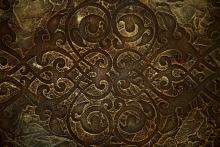
Tragically, the separation of spirit from matter has tainted the way we see all of humanity. In the past, it was used to justify violence against the Native Americans, and in the more recent past we’ve dismissed thousands of casualties from wars in the Middle East. We have leaders today who consider war in Korea palatable because “if thousands die, they’re going to die over there.” This is a direct result of a theology that cares more about souls than it does bodies. It’s much harder to love our neighbor if we don’t see the divine, the Christ, within them. It makes it much easier to characterize entire swaths of people groups who don’t have “Jesus in their hearts” as being the enemy. It continues to pervade modern day missions that typify non-Christian cultures around the world as savages living in darkness, rather than looking for the light that is already present and using that as the starting point.
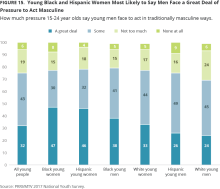
“In the midst of the critical national conversation now taking place on issues of sexual harassment and assault, this survey shows that young Americans in their teens and early twenties see serious negative consequences flowing from traditional depictions of masculinity,” Robert P. Jones, CEO of PRRI, said. “Young women, in particular, are worried that these expectations carry within them the seeds of sexually aggressive or even violent behavior.”

Kevin L. Ladd, a professor of psychology at Indiana University South Bend, said it makes sense that, as society grows less religious in the traditional sense, fewer people are turning to prayer.

If you were of age in 1993, you don’t need to be reminded who the Branch Davidians were and what the Federal Bureau of Investigation did to them on April 19th of that year.
For newcomers to the scene, these “Davidians” were well-known for their extremist activities in Waco, Texas. They were a typical “cult” during a decade in which intense and isolated religious groups were a threat to their neighbors, the relatives of their members, and the public at large. In that April incident, the FBI, urged by public opinion, set out to discipline them and prevent them from creating public disturbances. Yet, create a disturbance they did.
